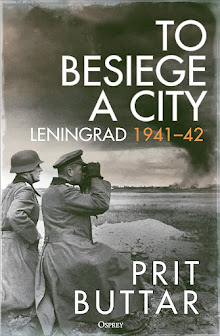 |
| Russian T-62 at Gora Filina |
In 1943, as the likelihood of a full scale Soviet offensive increased a huge underground command and control bunker was built into the Gora Filina cliff. It was originally occupied by the Finnish Laatokka Coastal Brigade (Laatokan Rannikkoprikaati). The bunker was built out of a natural grotto and has an inner floor area of 750 square metres and a ceiling height of four metres. All necessary facilities were incorporated into the construction - electricity, water supply, communications, heating, ventilation and vehicular access.

The bunker complex is now a popular tourist attraction and the two main areas have been converted into exhibition halls. The first is concerned with the military history of the Winter War and what Russians call 'The Great Patriotic War'. The collection of artefacts, photographs and papers offer some fascinating insights into the impact of these wars on this corner of relatively remote Karelia. I was surprised to find that Italian MAS motor torpedo boats (MTBs) were transported to Lahdenpohja Bay in 1942 for use on Lake Ladoga as part of the German Nordlicht operation against the besieged city of Leningrad.
The second hall is devoted to the geology of the area. Outside there is a path and steps which lead up to the top of the mountain. It's perhaps a ten minute walk and offers a spectacular view of the old barrack blocks, the town and Lake Ladoga beyond. It was here that the local defences were centred - anti-aircraft guns and smaller machine guns to protect the perimeter.
The bunker was most heavily used from 5 March 1944 until 19 September 1944 when the Finns signed an armistice agreement and withdrew from the area - taking most of their important documents with them. The complex was decommissioned in the 1990s and founded as a museum heritage site in 2015. The declared 'mission' of the museum is to remind visitors of the importance of maintaining peace between Finland and Russia.
 |
| Interior of First Underground Hall |
 |
| Barracks as seen from the top of Owl Mountain |
 |
| Administration Building - Lahdenpohja Garrison |
 |
| Mess Hall - Lahedenpohja Garrison |
Click here to see my Owl Mountain Flickr collection.






















































